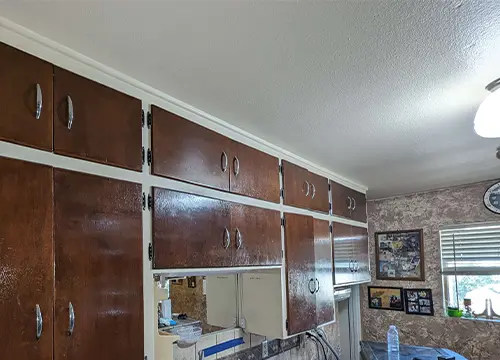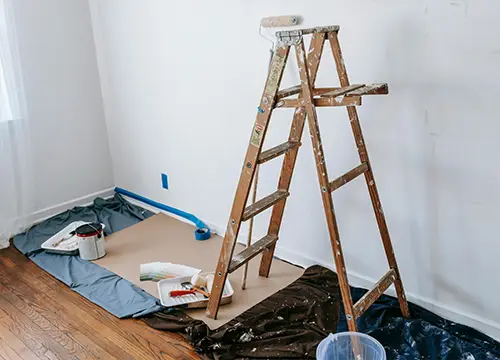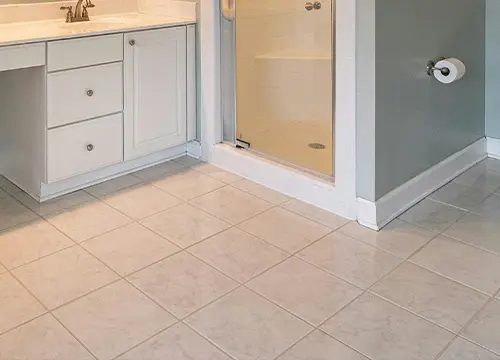If you own a home or business property, you’ve probably heard of asbestos. But what exactly is it? Asbestos is a natural fiber that was used in thousands of building materials for most of the 1900s. Builders loved it because it was strong, fire-resistant, and it made great insulation.
But here’s the problem: we now know that asbestos is extremely dangerous when its tiny fibers get into the air and people breathe them in. These fibers can cause serious health problems, including:
- Lung cancer
- Mesothelioma (a rare but aggressive cancer)
- Asbestosis (scarring of the lungs that makes it hard to breathe)
- Other breathing problems that get worse over time
The government started cracking down on asbestos in 1973, when they banned it in spray-on fireproofing. In 1989, the EPA tried to ban most asbestos-containing products, but this was later overturned. Today, while new uses are banned, some older products can still legally contain asbestos. So asbestos can still be found in some surprising places. Many buildings (especially older ones) still have materials containing asbestos, and you need to be careful during repairs and renovations.
Table of Contents
Which Buildings Have Asbestos?
Let’s talk about which buildings are most likely to have asbestos:
Buildings Built Before 1980
If your property was built before 1980, there’s a very good chance it has asbestos somewhere. During this time, asbestos was used in almost everything – from floor tiles to roof shingles and everything in between.
Buildings From 1980-1990
Buildings from this time might still have asbestos, but it’s less common. Builders were starting to learn about the dangers and many were choosing safer materials. Still, it’s better to be safe than sorry with these buildings.
Buildings After 1990
While newer buildings are less likely to have asbestos, it’s not impossible. Some materials containing asbestos were still being used, especially in certain types of vinyl flooring, roofing materials, and some cement products.
Common Spots Where Asbestos Hides
Asbestos could be lurking in many places around your property. Here are the most common spots:

Inside Your Building:
- Insulation in your walls and attic
- Old floor tiles (especially 9-inch vinyl tiles) and the glue used to stick them down
- Popcorn ceilings (especially popular in homes from the 1950s to the 1980s)
- Pipe wrapping, especially around hot water pipes
- The tape and insulation around heating and AC ducts
- Joint compound used between pieces of drywall
- Drywall/plaster texture on walls and ceilings
- Old electrical panel backings
- The backing behind fireplaces
Outside Your Building:
- Roof shingles
- Siding materials (especially older cement-based siding)
- Old window caulking
- Cement pipes
- Older gutters
Dangerous Scenarios When Asbestos Could Harm You:
Let’s look at some common situations where you might accidentally disturb asbestos. Remember, asbestos is only dangerous when it’s disturbed and its fibers get into the air.

Scenario 1: The DIY Kitchen Remodel
Meet Tom and Sarah. They bought a 1970s home and decided to save money by remodeling their kitchen themselves. They started pulling up the old vinyl floor tiles, not knowing they contained asbestos. The breaking tiles released dangerous fibers into the air. They should have had the tiles tested before starting the project.
Scenario 2: The Popcorn Ceiling Problem
John wanted to modernize his 1960s home by removing the popcorn ceiling in his living room. He started scraping it off dry, creating clouds of dust. What he didn’t know was that many popcorn ceilings from this era contain asbestos. This kind of project needs professional testing before starting.
Scenario 3: The Pipe Repair Gone Wrong
Mary had a leaky pipe in her basement. While trying to fix it, she damaged the old insulation wrapped around the pipe. This insulation was actually asbestos pipe wrap, common in older homes. Any repair work around old pipe insulation should be checked for asbestos first.
Scenario 4: The Innocent Wall Hanging
The Garcia family was hanging new pictures in their 1975 home. While drilling into the walls, they went through some old insulation. They didn’t know that the wall insulation contained asbestos, and the drilling released fibers into their home. Even simple projects can disturb asbestos if you don’t know where it is.
Why You Need Professional Help: Testing and Removal
After reading these scenarios, you might be worried about asbestos in your own property. Here’s the important thing to remember: you can’t tell if something contains asbestos just by looking at it. The only way to know for sure is to have it professionally tested.
Why Professional Testing Matters
- Certified labs have special equipment to identify asbestos
- Professionals know how to take samples safely without releasing fibers
- You get a detailed report telling you exactly what materials contain asbestos
- Testing gives you peace of mind before starting any projects
The Dangers of DIY Removal
Trying to remove asbestos yourself is extremely dangerous because:
- Regular dust masks don’t protect against asbestos fibers
- Improper removal can spread fibers throughout your building
- You might expose yourself, your family, or your employees to dangerous fibers
How Pristine Restoration Can Help
At Pristine Restoration, we take the worry out of asbestos testing and removal. Our certified experts will:
- Inspect your property thoroughly
- Take samples safely for testing
- Give you a clear report of what we find
- Create a safe removal plan if needed
- Remove any asbestos-containing materials properly
- Make sure everything is disposed of legally
- Give you documentation showing the work was done right
Don’t take chances with asbestos. If your property was built before 1990, or if you’re planning any renovation work, contact Pristine Restoration first. We’ll help make sure your property is safe for everyone who lives or works there.
If you live in Arizona, and are worried about asbestos, call us today to schedule an inspection. Your safety is our top priority!


